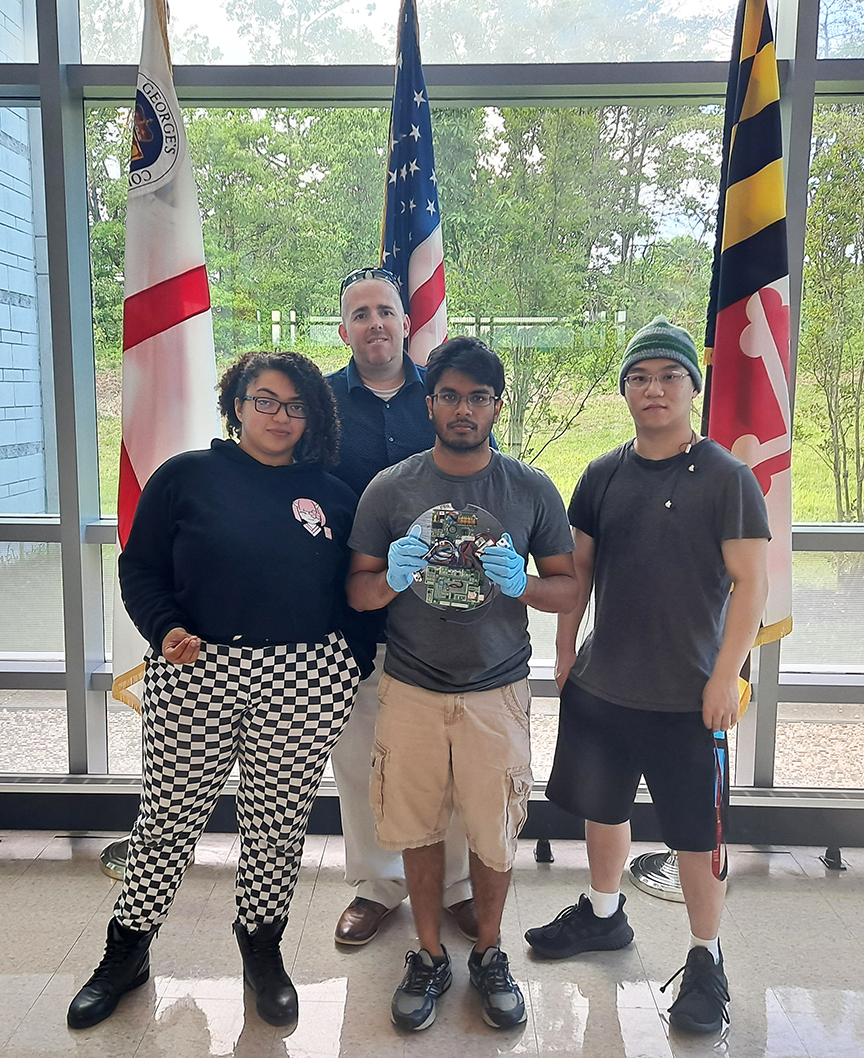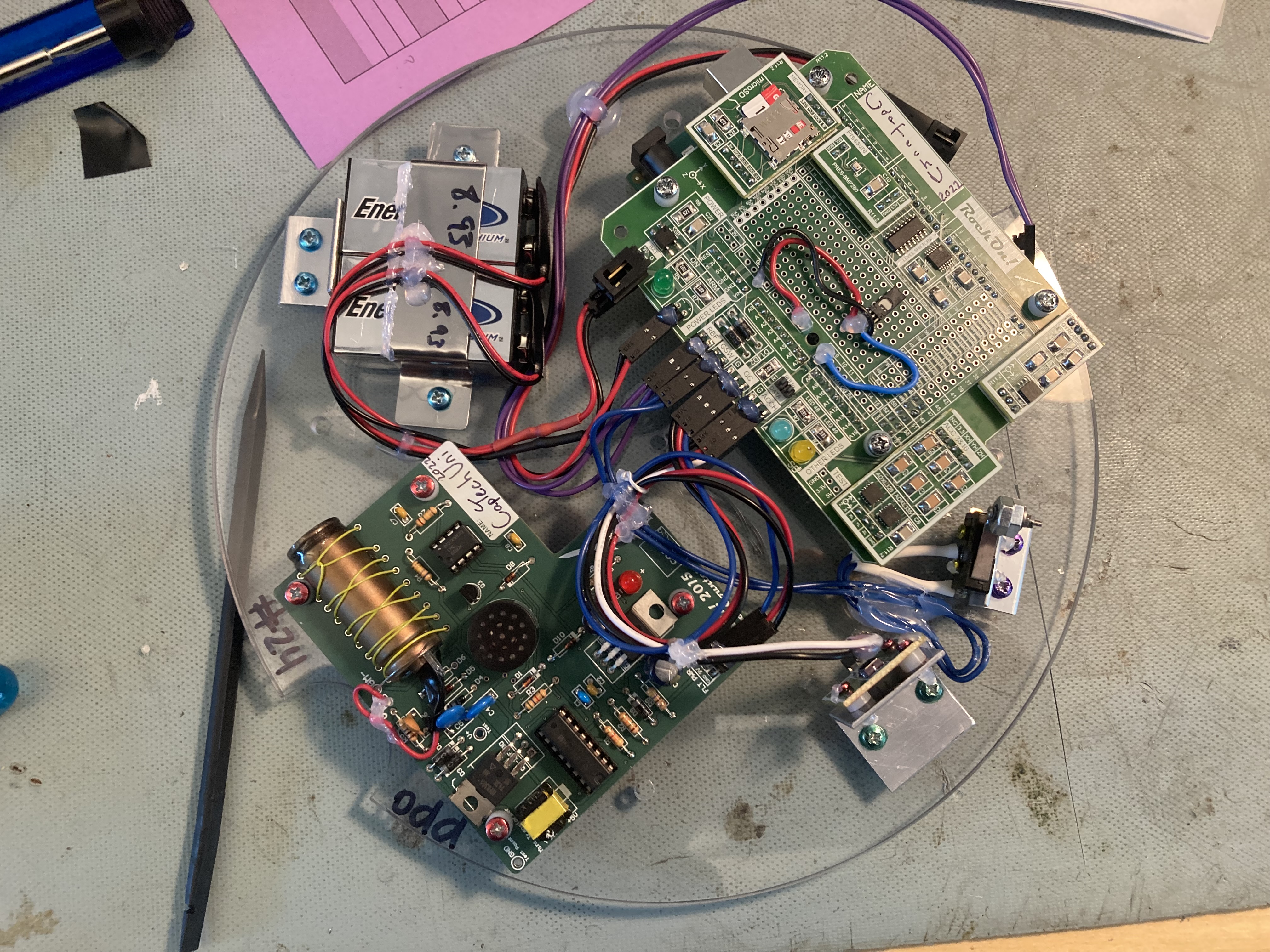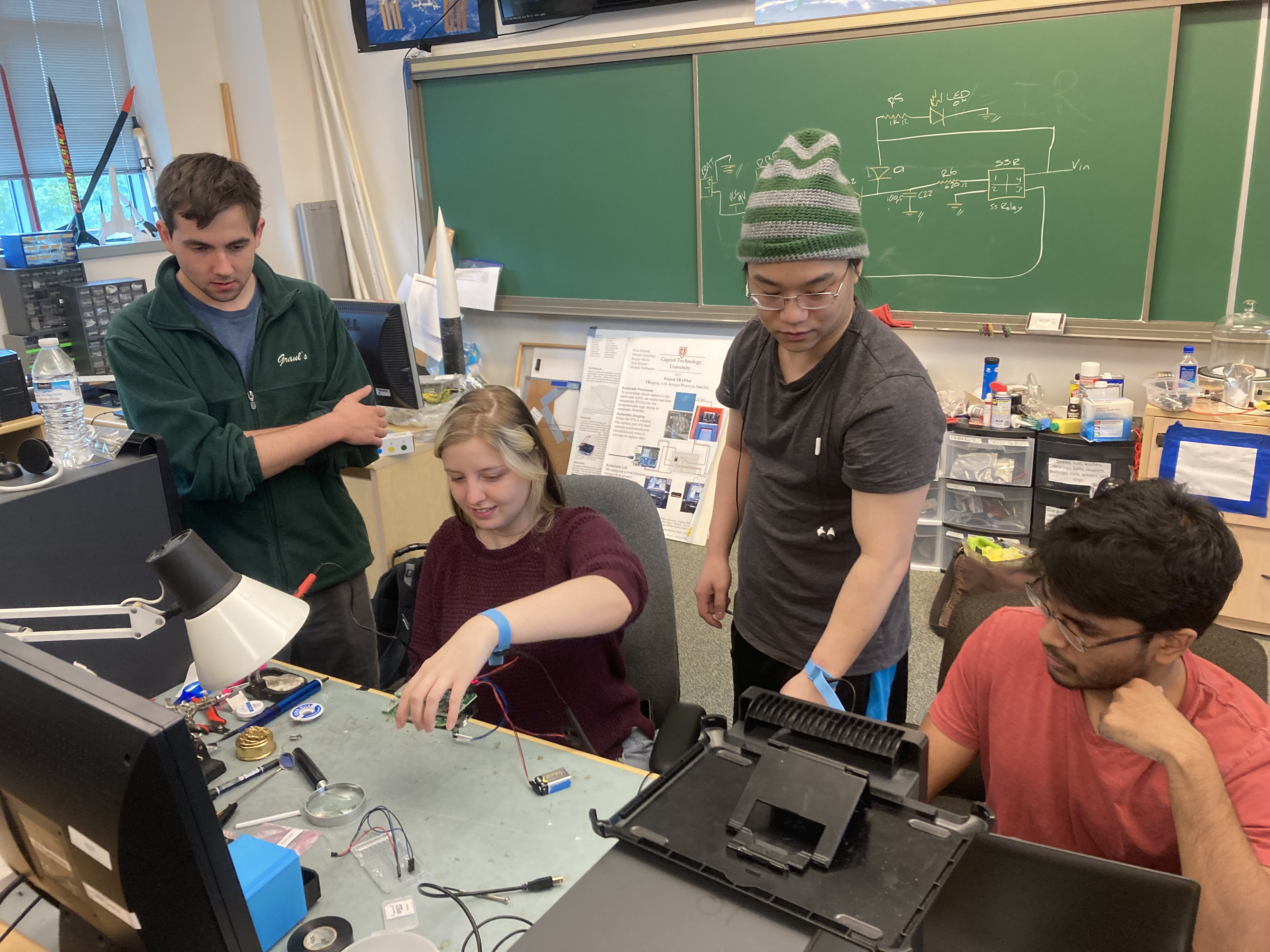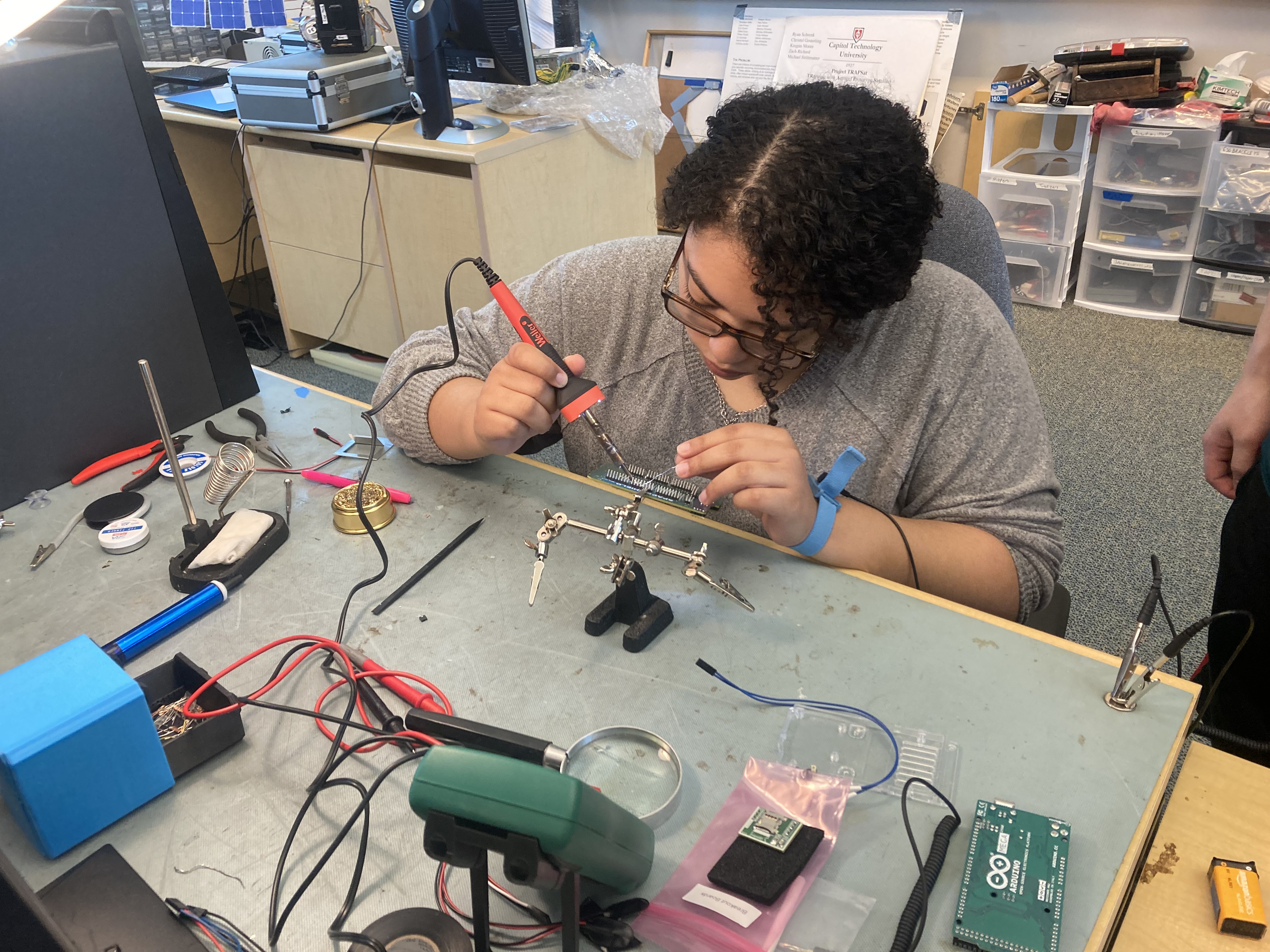Thank you to Professor Marcel Mabson for providing this detailed writeup of the RockOn project! Please enjoy Professor Mabson's scientific article that explains the process of this exciting student endeavor at Capitol.
A multidisciplinary team of students from Capitol Technology University's Astronautical Engineering (AE), Electronics Engineering Technologies (EET), and Mechatronics majors, have successfully constructed a functional science payload that will launch on a sounding rocket from Wallops, Virginia in the coming weeks.
Part of the RockOn program, sponsored by the Colorado Space Grant Consortium (CSGC), this annual project gives students the opportunity to build a science payload that will launch on a sub-orbital flight. Students were provided parts to construct the payload, but they must both build and test each subsystem before the payload is integrated onto the rocket.
Capitol professors Marcel Mabson and Ryan Schrenk are mentors for the project. “This is a great opportunity for our students,” says Professor Mabson. “Taking what you learn in the classroom from electrical circuit testing to systems engineering, and building a payload that will launch into space, they are getting firsthand experience.”
According to Professor Schrenk, “I truly enjoy working firsthand with the students, the team work, applying their skill sets, and seeing them celebrate as the rocket launches is truly rewarding. A once in a lifetime experience that our students will never forget.”
The RockOn payload will launch from NASA’s Wallops Island on June 23rd (backup date June 24th) on an orbital sounding rocket. The rocket will reach a maximum attitude of 72 miles above Earth before reentering the atmosphere and landing in the Atlantic Ocean to be recovered. The payload has a suite of instruments to measure temperature, pressure, humidity, acceleration, and radiation counts. Students will travel to Wallops to integrate their payload and attend various workshops before the launch. Stay tuned in Capitol's social media and to the NASA Wallops website for launch times and streaming information.






